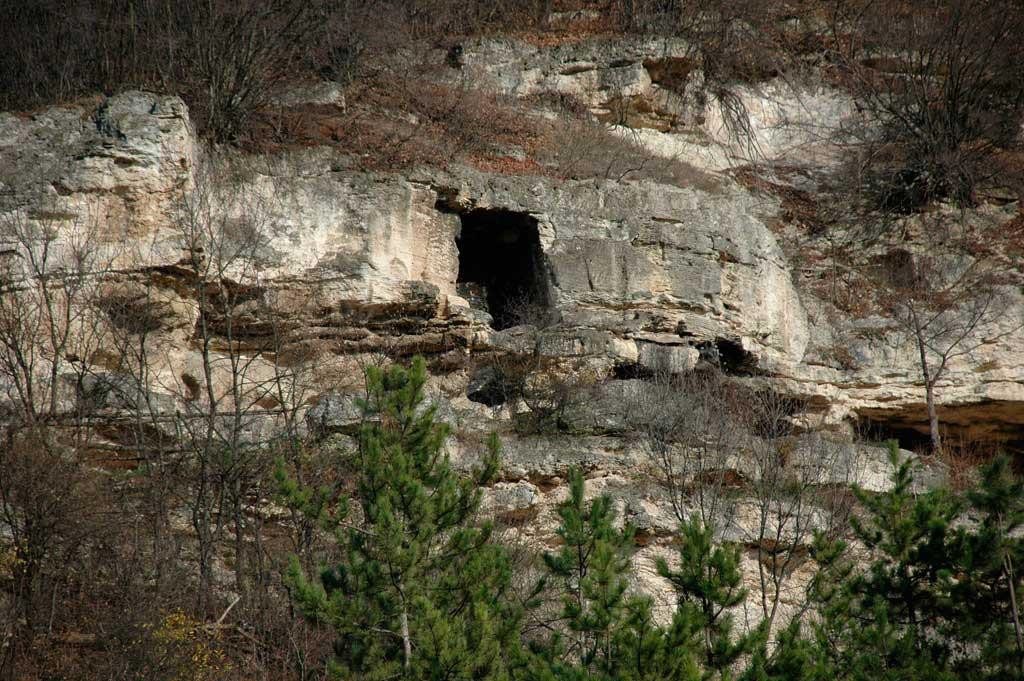

The Monastery of Albotin is an inactive monastery from the Diocese of Vidin, 20 kilometers west of Vidin (near the villages of Rabrovo, Topolovets and Gradec) in Katarino in Rabrovska River gorge, the Danube Plain. Historical data and the remains of frescoes, inscriptions and experts suggest that the monastery of the XIV century in the village of Altovin was active in the sixteenth century. It was administratively affiliated to Vidin. Both the village and monastery were destroyed. There are only ruins of a monastery built in natural caves, shallow niches carved into the rock, namely parts of the church with three naves, and its rooms from above and probably from its monastic cells zone, tables, storage and cellar. Throughout the Middle Ages, the years of slavery, to this day in Vidin are spread sparks of faith, which lead its children as belivers of Christ’s life. Many ancient temples, monasteries and rulers talk about the love for God and highest spiritual aspirations of Christians in this region, jealousy and love for the Church which inspired and kept worthy our ancestors. One of these peaks of the spirit and a symbol of faith, is the monastery in the village of Gradec, 20 km away from Vidin. With its glorious historical past, today the only remains from the monastery are the caves in the rocks and piles of stones covered by the veil of forgetfulness. There are some historical information, little, about the monastery: Albotina is a beautiful area in the hill pass of the region of Vidin along the river Rebravskata, a tributary of the Topolovets river. . The name “Albotina” comes from the vanished village of the same name which is mentioned in the summary register of Vidin, from 1560, with the amended form of ” Altovin”. In the rock massif, on the north side of the river was built the monastery, being used shallow natural caves and rock shelters and additional rooms which were carved, and exterior facades and the walls were modernized. There is a monastery complex and the entire area is easily accessible. Unfortunately, it was subjected to relentless destruction. Stones in more recent times, soft rock, are being destroyed, treasure hunters have dug large holes causing irreparable damage, the breeders have used them during the summer for their cattle. All these contributed to the almost complete destruction and the restoration of the monastery would be difficult.
The monastery is on a steep narrow road , its parts are in chain, like some terraces of a extremely soft rock. Each room has exit on the terrace, covered with a porch, hanging like a nest of 20-25 meters above the river. The temple of the Monastery, the center of spiritual life of the monastery is located in the intermediate sector, the carved into the inner part of the curve of the rock massif. The south and southwest part of the church had been completely destroyed, the monastery being oriented according to canonical requirements from west to east. The ship of the church of the monastery remains, richly decorated with frescoes and decorative columns and cornices, which speak about the life of the pray. The presence of a baptistery shows that the temple was used not only for the needs of the Fraternity of prayer, but also for public services. Many graves have been discovered – 29 in number, most of them are secular, which shows that the monastery has been a place of honor and in which its donors wanted to rest.
The northwest of the monastery was of two floors, and there is also the second largest hall, after the church, which allegedly served as a dining room. This is where pilgrims are welcomed by the spiritual fathers, for the guests of the monastery, which proves the traditional monastic hospitality, for learning the faith. To the east of the church there are other rooms: several consecutive cells with impressive modesty and practicality.
A very important part of the monastery was a natural terrace located in front of it. This is significantly changed because of the career which destroyed a large part of it, and caused the destruction of the walls and facades. Here are the uncovered graves, aforementioned, which are supposed to be the secular graves of the people with family ties, of donors and monks of the monastery.
The name of the temple of the monastery is unknown. The time speaks about the memory of a sain,t to whom the church, carved with difficulty, in rock, was dedicated. But, if the people from this region, find here spiritual powers, in case they need the restauration of the monastery, these could give to it the name of the great ascetic father – Rev. Romylos of Vidin. He has in his prayers the holy blessing of God to light, again, the the monastic prayer lamp that made this place to be a guardian of respect for the Orthodox faith and patristic tradition.
